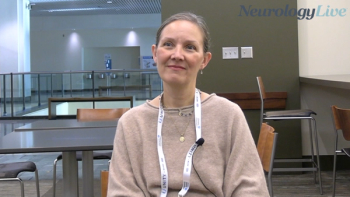
Appreciating the Expanding Armamentarium for Epilepsy
Michael R. Sperling, MD: We have new drugs, we have old drugs, we have intermediate-age drugs, we have drugs that are in their teenaged years, we have others that are senescent, and we have other ones that are just toddlers at this point, or younger. Are there clear advantages of the new drugs over the old drugs? And is it for all of them? Is it reasonable to think about new drugs and old drugs? How should we be thinking about these things, Eric?
Jesus E. Pina-Garza, MD: I feel very lucky engaging in the neurology field that just in the last 3 decades, I have seen things that are different. Sometimes it takes a century to see changes, but things are moving so fast. So do I feel that the new drugs are different? Absolutely. If you look at controlling partial epilepsy, focus seizures, the answer may be that bromide is just as good as the latest agents. But the difference is in many other areas.
So, even in my own practice, definitely if I look at the evidence, there are benefits from the newer drugs. There are 2 that are very clear to me. One was at the time that we thought about rational polypharmacy, there were not enough options to be rational. There were sodium-channel blockers or gabapentin. You picked 1 of each and that’s as rational as you could get. But, if you look at the mechanisms of action, it makes a lot of sense—similar to other models in medicine—that when you treat hypertension, for example, you don’t pick 2 beta-blockers. So you try a diuretic, a calcium-channel blocker, and a beta-blocker, and finally you target that differently and get results.
In epilepsy it’s the same. We have different targets that may offer benefits. And many of the new medications were developed because of a need. So definitely there’s a place for them. I find, especially when we do post hoc analysis and look at different mechanisms of action, the outcome seems to be better. The other benefit, which is more anecdotal but is also evidence-based medicine, is that I used to see Stevens-Johnson syndrome in my patients all the time, and I used to send some patients with pathological fractures in adolescence to become adult neurology patients.
We have drugs that are way gentler on the liver metabolism, on the bone density. And, yes, clearly we saw the effects of those drugs because they were available for many, many years: more than a century in some cases, or close to a century. But I have seen that in the last 20 years when I don’t use them, and the difference is big.
So these things were bad, and, again, I say you cannot stop every focal seizure, but you can make everybody sick. They’re very important. Some of the new drugs have a better-known effect on pregnancy. They’re super welcome. Some of the drugs that have a better effect on bone density are super welcome, and some of the drugs, because we now pay more attention to comorbidities like cognition, are super welcome. Because that’s the main concern of any mother that comes to my office. They say, “Don’t make my child a zombie,” so clearly there’s concern and there’s no reason for it.
Michael R. Sperling, MD: Trevor, you said something very wise a little while ago and that is you don’t present patients with a treatment—this is the drug you should have—but rather, there are many that one could have. How do you choose whether you’re ordering chicken or beef or the vegetarian option from that menu?
Trevor J. Resnick, MD: It depends who I’m speaking to. I think just to answer that question and to enlarge on Eric’s description, what we have now are more options. I don’t think necessarily any specific option is better but they’re different. So, for example, a lot of the older medications were very strong enzyme inducers and that caused significant issues, especially in elderly patients who were on multiple drugs. So even if you have a drug that may be equally effective, the fact that it’s not an enzyme inducer and significantly altering the metabolism of other drugs is a significant help in terms of managing that patient. I think when we look at treatment we don’t just look at the individual drug about its effectiveness and/or its adverse effect. You’re looking at whole variation of how it specifically will affect that patient.
For example, another issue that is specific to a population is the issue of the half-life. So if you have a drug that you can only use once a day, we know already from data that the less frequently that you have to give a patient a drug, the more likely they are to be compliant and take their medication, and the less likely they are to have breakthrough seizures. Now there’s a specific population of patients who believe that they are invincible, ie, adolescents.
Michael R. Sperling, MD: Or me.
Trevor J. Resnick, MD: And that’s the population of patients where you may specifically eye a drug where you have that advantage. So I think it’s not a class of drugs where it’s new or old; it’s having more choices and more issues within each choice that will fit that patient’s needs.
Michael R. Sperling, MD: Does therapeutic drug monitoring play a role for you in your practice when you’re choosing a drug and managing someone with it?
Kathryn A. Davis, MD, MS, FAES: It does. At least I see epileptologists using therapeutic drug monitoring very frequently. I find it helpful to make sure my patient actually is compliant with their medication. And unfortunately frequently we’ll find that their levels are much lower than would be anticipated with the drugs that I’m prescribing, and that will alter my management significantly. Having baseline levels when they’re well controlled if they have an acute illness can be very helpful.
In the female population that’s of childbearing age it’s critical to have baseline levels of their seizure medications when they’re doing well, because you’ll use that as a point of comparison when they’re pregnant. And to that point, getting back to some of the newer medications—and Eric made this point—some of the newer medicines have very good pregnancy registry data. The very new medications don’t have pregnancy registry data, even ones that we don’t think of as that new anymore, such as lacosamide, and that’s something that comes into my decision-making significantly and that discussion that I have. Very similarly, I also will in my mind typically have 2 or 3 top choice medicines and talk about all of them with patients, there are pluses and minuses, and help guide the decision in that initial decision-making process.
And the other piece of drug-drug interactions with the female population is the interactions with oral contraceptives that are estrogen containing. A lot of our newer medications don’t have that issue, but that’s really a key component to decision making.
Newsletter
Keep your finger on the pulse of neurology—subscribe to NeurologyLive for expert interviews, new data, and breakthrough treatment updates.


































